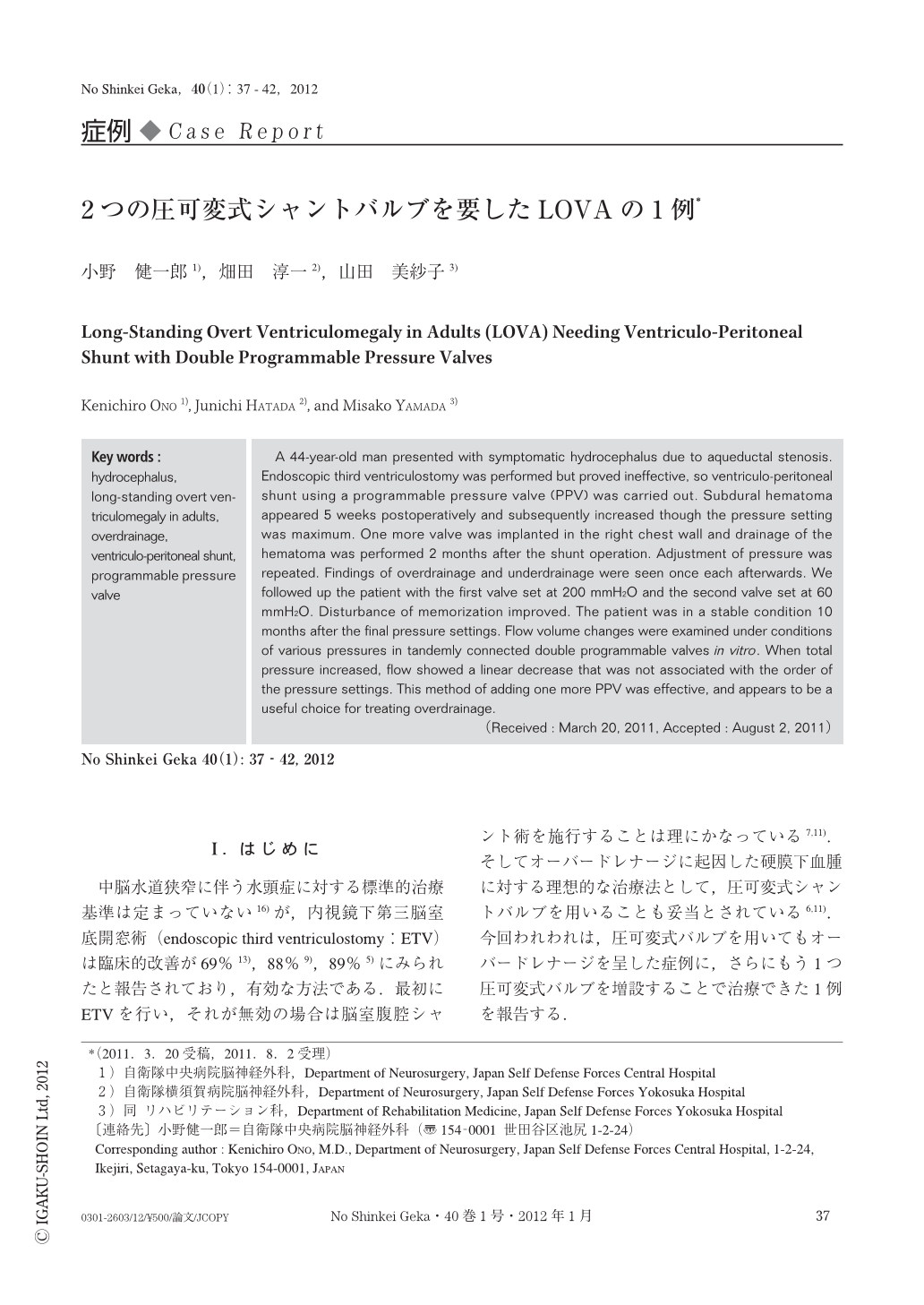Japanese
English
- 有料閲覧
- Abstract 文献概要
- 1ページ目 Look Inside
- 参考文献 Reference
Ⅰ.はじめに
中脳水道狭窄に伴う水頭症に対する標準的治療基準は定まっていない16)が,内視鏡下第三脳室底開窓術(endoscopic third ventriculostomy:ETV)は臨床的改善が69%13),88%9),89%5)にみられたと報告されており,有効な方法である.最初にETVを行い,それが無効の場合は脳室腹腔シャント術を施行することは理にかなっている7,11).そしてオーバードレナージに起因した硬膜下血腫に対する理想的な治療法として,圧可変式シャントバルブを用いることも妥当とされている6,11).今回われわれは,圧可変式バルブを用いてもオーバードレナージを呈した症例に,さらにもう1つ圧可変式バルブを増設することで治療できた1例を報告する.
A 44-year-old man presented with symptomatic hydrocephalus due to aqueductal stenosis. Endoscopic third ventriculostomy was performed but proved ineffective,so ventriculo-peritoneal shunt using a programmable pressure valve (PPV) was carried out. Subdural hematoma appeared 5 weeks postoperatively and subsequently increased though the pressure setting was maximum. One more valve was implanted in the right chest wall and drainage of the hematoma was performed 2 months after the shunt operation. Adjustment of pressure was repeated. Findings of overdrainage and underdrainage were seen once each afterwards. We followed up the patient with the first valve set at 200 mmH2O and the second valve set at 60 mmH2O. Disturbance of memorization improved. The patient was in a stable condition 10 months after the final pressure settings. Flow volume changes were examined under conditions of various pressures in tandemly connected double programmable valves in vitro. When total pressure increased,flow showed a linear decrease that was not associated with the order of the pressure settings. This method of adding one more PPV was effective,and appears to be a useful choice for treating overdrainage.

Copyright © 2012, Igaku-Shoin Ltd. All rights reserved.


